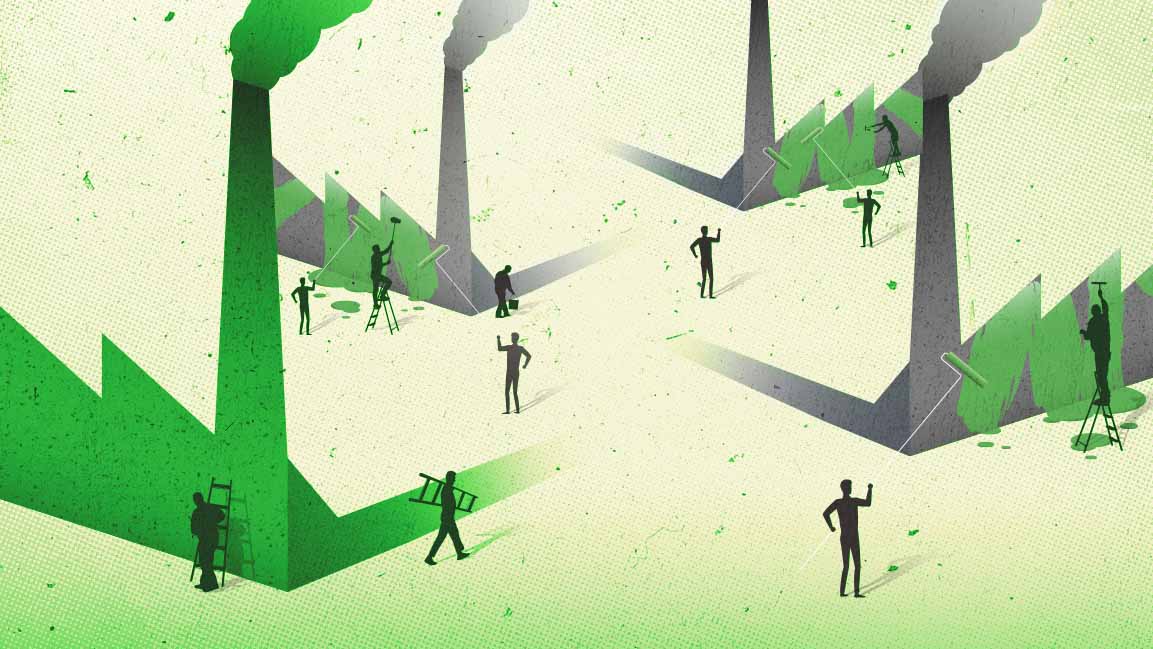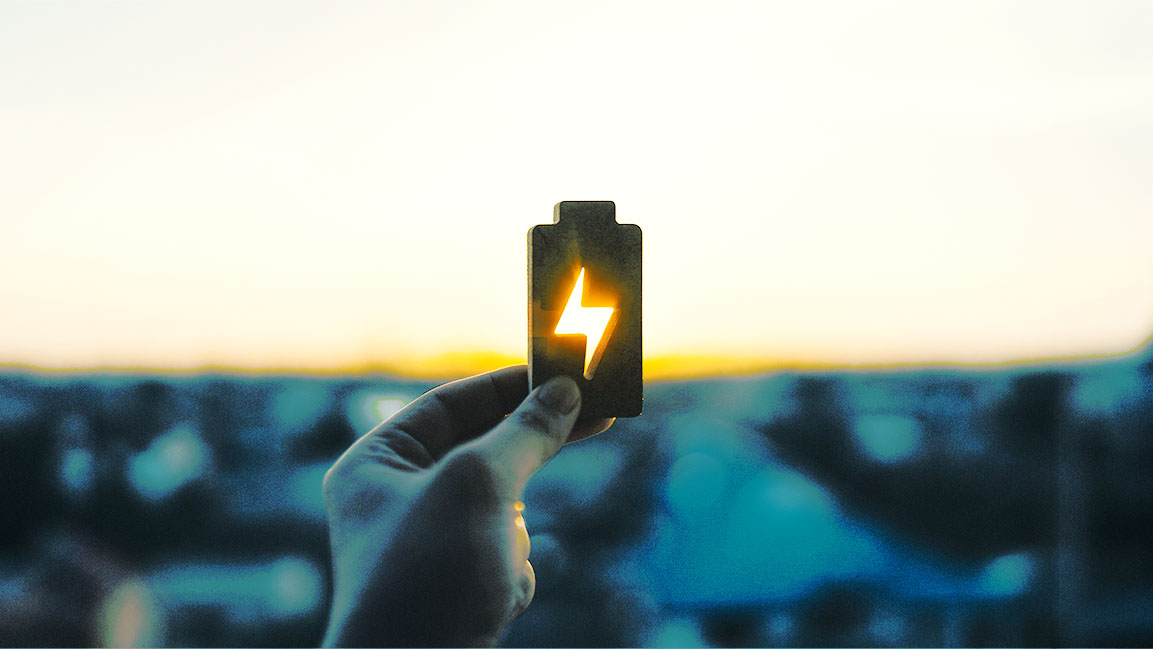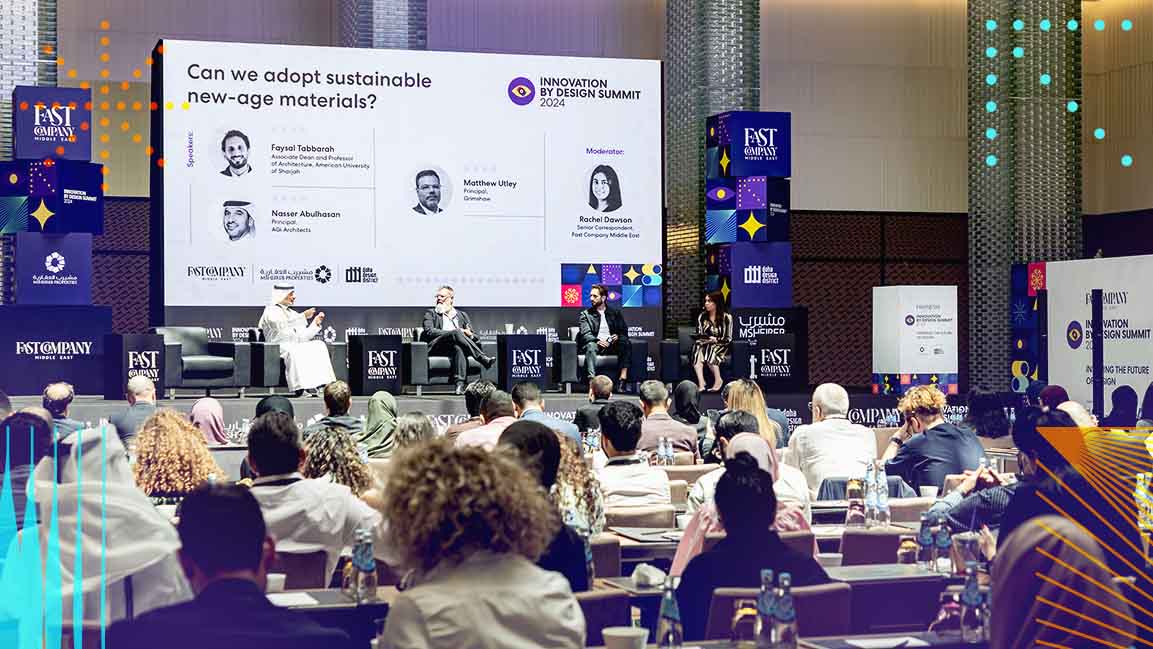- | 9:00 am
Energy transition in the Middle East needs a multi-dimensional approach
Experts say energy transition needs to start moving a lot faster, and there isn’t a one-size-fits-all approach

On a recent day under the August sun, three men heaved solar panels onto the roof of a roomy, two-story villa in Jumeirah Bay Island in Dubai.
The most populous of the UAE’s seven emirates, Dubai now gets 14% of its total energy capacity from solar power, helping push clean energy even into places where gas still provides cheap electricity.
Shams is an innovative initiative by the Dubai Electricity & Water Authority to connect solar energy to properties in Dubai so more homes are solar-powered. For Maha Nawaz’s family, it was a good deal.
“For us, it’s not just environmentally motivated,” says Nawaz. “It came down to cost; it made sense.”
The world is changing once again, whether we like it or not. Rivers are drying up; wildfires are getting deadlier, as are heat waves. The ocean is rising, and catastrophic floods are becoming more frequent.
The science is unequivocal that we need many more wind and solar farms — along with battery storage systems, electric cars, and other clean energy technologies — to kick our fossil fuel habit and avoid climate catastrophe.
“Transitioning to clean energy benefits all of us. This past July was the hottest month in global recorded history, and it’s not getting better. The UAE recorded its hottest day of the year at 50.8°C on August 26. In Canada, my home country, over 1,000 wildfires were reported in one week in August, causing entire communities to evacuate. Rising temperatures and climate change affect all of us, some more than others,” says Jeremy Crane, CEO and Founder of Yellow Door Energy.
MULTI-DIMENSIONAL APPROACH
But the energy transition needs to start moving a lot faster. And a multi-dimensional approach is imperative for the Middle East.
“This means that simply focusing on one aspect of the transition, such as carbon reduction or renewable energy generation, is not enough,” says Marco Arcelli, CEO of ACWA Power.
A multi-dimensional approach to clean energy transition encompasses technological advancements, policy reforms, economic restructuring, and behavior change.
The overall approach is at two levels, adds Arcelli. “The first level is about providing energy in an affordable, sustainable, reliable, and speedy manner. This requires a shared vision, constant and open dialogue between governments and investors, and dynamic decision-making.”
This is happening in Saudi Arabia and the UAE, for instance. The second level is about system planning. Technological advancements are pivotal in developing and enhancing clean energy sources.
“However, no single technology is the solution – it is about achieving a balanced mix, streamlining advancements in battery storage, grid infrastructure, and smart grid systems while integrating renewable energy sources into existing energy systems,” says Arcelli.
Putting the region on a path to achieve net zero emissions by 2050 requires a substantial increase in capital-intensive clean energy assets – such as wind, solar PV, electric vehicles, and hydrogen electrolyzers – which have relatively high upfront investment costs.
BRINGING REALISM TO DISCUSSION
Considering that, experts say it’s important to bring realism to the discussion of energy transition, given each country’s affordability in investment cost and access to capital.
“It is critical to balance power demand, economic development needs, and emissions targets. Think KSA, UAE, Oman, Algeria, Iraq, or Libya – they are very different circumstances, challenges, and opportunities.
Each country is unique and requires its energy transition plan to ensure access to secure, reliable, affordable, and sustainable power,” says Joseph Anis, President & CEO of Europe, Middle East & Africa at GE Vernova’s Gas Power.
While it is important to bring realism to the energy transition discussion, Crane says it is equally important to set ambitious targets. “The UAE is no stranger to setting ambitious targets. It is the first country in the region to commit to becoming net zero by 2050. Soon after, net zero commitments were announced by Saudi Arabia, Bahrain, and Oman.”
While countries may have different challenges regarding access to capital and investment costs, the principles of getting things done remain the same.
“Decarbonizing an economy requires a clear vision from the top, strategic planning for key industries, patience and commitment from all stakeholders, the courage to change course when needed, and the openness to welcome new technologies,” Crane adds.
Given the supply chain disruption and the high transition cost, subsidies for clean energy projects can help increase energy generation while decreasing the cost barrier and improving investor appetite.
“This also helps spur innovation and adoption of advanced technologies, which further reduces cost and increases efficiency,” says Arcelli.
Interestingly, last year, renewable energy was a cheaper source of electricity than fossil fuels, according to a report by the International Renewable Energy Agency (IRENA).
The last decade has shown incredible improvements in the competitiveness of renewable power. In 2010, onshore wind was 95% more expensive than fossil fuels, but in 2022 it was 52% cheaper. Solar PV was even more affordable, going from 710% more expensive to 29% cheaper.
“Solar does not need subsidies as it is now cost competitive against fossil fuels,” says Crane. “Subsidizing the price of electricity is not a long-term solution.”
In 2021, GCC countries spent $76 billion, or 4.5% of their collective GDP, on fossil fuel subsidies. According to PwC research, in the past 20 years, electricity subsidies have cost GCC countries more than $120 billion.
“While we understand the need to support businesses through electricity subsidies, we also need to consider the implications. If electricity is too cheap, what incentivizes businesses to conserve energy and switch to solar power, now cheaper than conventional electricity?” asks Crane.
On the other hand, in the case of emerging solutions such as green hydrogen, end-users are hesitant due to factors such as price uncertainty and commercial viability, which puts the industry at risk of failing to develop fast enough, says Arcelli.
“Thus, this could benefit from supporting a framework, like the US has put in place and the EU and Japan are considering, to jumpstart progress.”
“Ultimately, whether subsidies are a viable path to energy transition in the face of supply chain disruption and high transition costs depends on various factors, including the specific context and goals of the transition, the effectiveness of the subsidy program, and the availability of alternative policy instruments,” he adds.
Seeking out a middle ground is extremely worthwhile and necessary to speed up the clean energy transition.
“Technologies do not necessarily have to be capital-intensive. Instead, we can use AI, digital twin infrastructure, and smarter design to improve the efficiency of existing systems,” says Crane.
While investing in research and development to find innovative and cost-effective solutions is crucial for meeting net-zero commitments, the region is launching an aggressive push for green hydrogen.
“Green hydrogen is low-carbon intensive and can help meet the increasing electricity demand,” says Arcelli.
“The NEOM Green Hydrogen Project integrates renewable power from solar, wind, and storage, with a capacity of around 4 GW. By using advanced technologies, such as Air Products’ air separation, the project aims to produce 600 tonnes of clean hydrogen per day, along with nitrogen and green ammonia production,” he adds.
Once completed, the project is expected to reduce carbon emissions by 5 million metric tonnes per year, highlighting the role of technology in achieving climate goals.
Anis says it is an “exciting time” to be part of the energy sector, with transformational developments in areas such as efficient power generation equipment, low-carbon fuels, small nuclear modular reactors, and grid solutions.
Stressing greater investment in renewables, transitioning to low-carbon fuels, such as hydrogen and CCUS technologies, and strengthening and digitizing the grid to evolve from centralized to distributed, Anis says, “Many of these technologies are suitable for energy-intensive, often hard-to-decarbonize sectors like oil & gas, smelters, and industries that have a significant presence in the Middle East.”
“Building local capabilities and investment support are crucial for the success of any energy transition plan,” adds Anis.
All agree that a successful transition requires cooperation from all stakeholders, such as financial institutions, governments, the private sector, non-profits, educational institutions, and the general public.
“By transitioning to clean, low carbon or no-carbon electricity-producing options, we are ensuring not just the survival of our businesses, but more importantly, of our species,” says Crane.
At the Fast Company Middle East’s flagship events – World Changing Ideas and Green Goals Summit – industry leaders and experts will discuss how new technologies and strategies can improve mobility and energy transition and make it climate-friendly, and how energy transition is a necessity and an opportunity to forge a new economic development model.
The second edition of the Green Goals Summit will be held in Dubai on November 2. Click here to register.








































